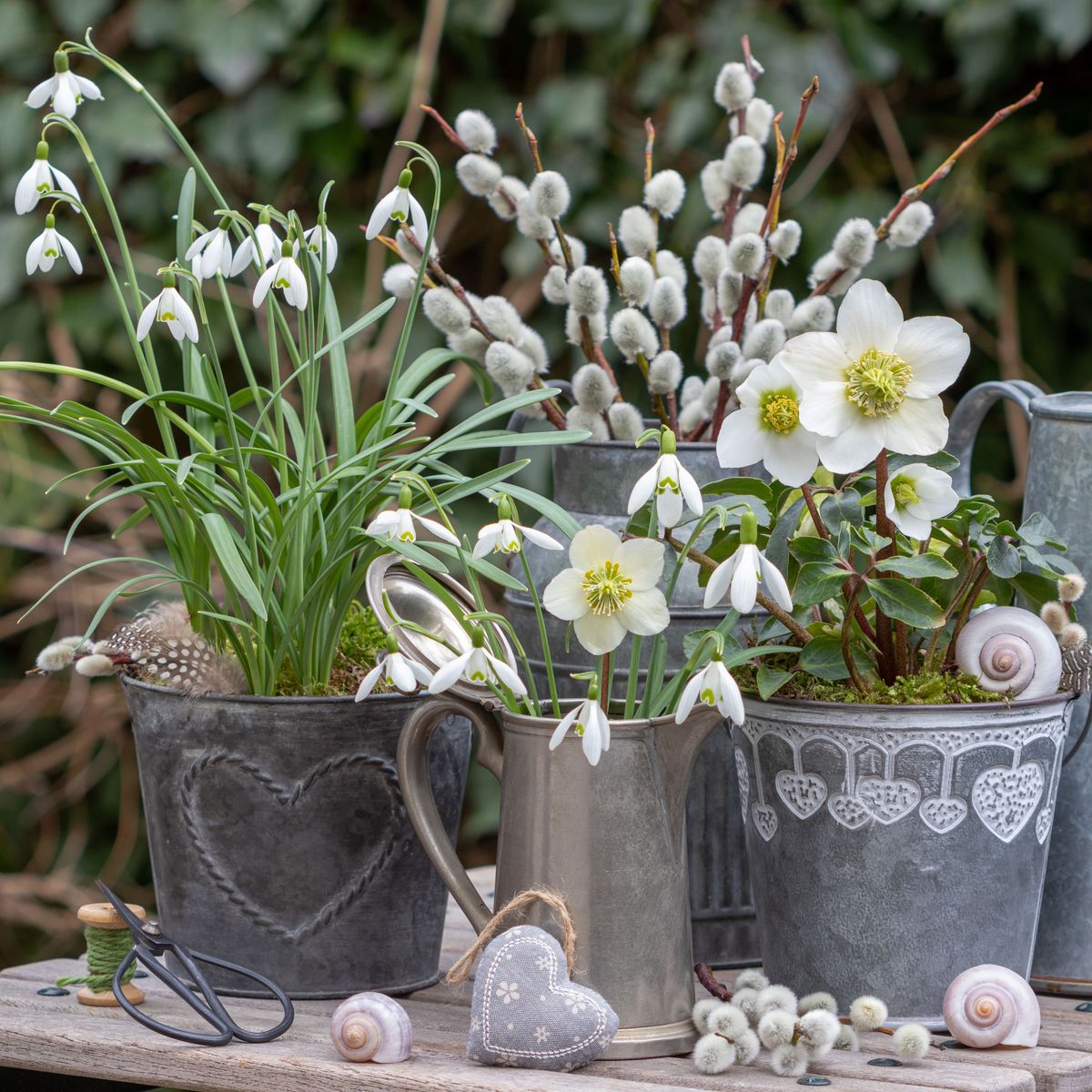The Asteraceae family has a lot of wonderful plants; some of the most popular are the zinnias. This wonderful genus has given rise to various new hybrids and cultivars over the years.
But some of these cultivars bring something extra special to the table, as with Zinnia elegans (ZIN-ya ELL-eh-ganz) ‘California Giants.’
First developed in 1926, ‘California Giants’ really lives up to its name, towering above most other zinnias and having huge blooms that put most other plants in your garden to shame.
While it can be grown as an annual, these zinnias are actually perennials in warmer climates and are genetically stable.
Please note that this cultivar doesn’t do so well when grown in a container for several reasons, so it’s usually best to plant it directly in the garden.
Zinnia Elegans ‘California Giants’ Care
Size And Growth
When we say this is a giant zinnia, we aren’t joking!
Stalks that reach 3′ to 4′ feet tall arise from a clump of shiny blue-green foliage that usually stretches out to a 1′ foot diameter.
Flowering And Fragrance
This is where the ‘California Giants’ really shine! Around midsummer, huge 5” inch-wide double blooms appear in a wide range of colors.
Depending on the particular selection you choose, you might get flower colors such as:
- Apricot
- Coral
- Gold
- Lavender
- Maroon
- Mauve
- Orange
- Pale yellow
- Pink
- Purple
- Red
- Red-orange
- Rose
- White
If this isn’t enough, the double blooms will continue to appear until frost, especially if deadheaded.
Light And Temperature
In most cases, you will want to give this zinnia full access to the sun.
The main exception is in particularly arid or harsh climates where the midday sun is known to cause damage to plants.
In such climates, find a spot in your garden that gets full sun in the morning or evening but has a bit of light shade or dappled sunlight during the afternoon.
‘California Giants’ will grow in USDA hardiness zones 3 to 10 but will only behave as a perennial in zone 8 or warmer.
They’re not considered frost-hardy plants, so growing in colder regions will also shorten their growth and blooming cycle.
Watering And Feeding
Due to its large size, the ‘California Giants’ zinnia will need a bit more water than some of its smaller siblings.
The plant will need watering when the soil is dry 1” inch down (the tip of your finger to the first knuckle, if using the finger trick instead of a tool).
Avoid using the top-down method to water and instead aim for the soak-and-dry method to help reduce the risk of fungal infections.
Despite the size of this plant, it doesn’t need much fertilizer if you add compost or another organic component to the soil at the time of planting.
When growing as a perennial, consider adding a layer of mulch on top to help protect the plant throughout the winter and to provide extra nutrition for the following year.
Soil And Transplanting
This zinnia is somewhat forgiving, but you’ll want the soil to have a high organic component to get the best growth.
Aim for loose, well-draining soil with a pH of 6.1 to 7.8 as your base.
You can add an aggregate such as perlite, vermiculite, or coarse sand to improve drainage.
It’s best to mix in some organic compost before planting to give your zinnia that extra boost (it will also help lower the pH to a slightly acidic level, which is better for its growth than a neutral to slightly alkaline soil).
One big disadvantage to ‘California Giants’ is that it hates being transplanted.
When growing in containers, it may need support and may not survive repotting.
Outdoors, it’s best to plant the seeds directly into the ground once there’s no longer a threat of frost.
Grooming And Maintenance
This is another area where the ‘California Giants’ cultivar differs slightly from regular zinnias.
When the plant is about 12” inches tall, prune off the top just above a full set of leaves.
This is usually odd with smaller plants, but those who grow roses and other larger plants will be familiar with this technique.
What it does is cause the stems to divide like a hydra, producing multiple branches that will all create buds at blooming time.
This cultivar also responds well to deadheading, although you’ll want to leave a couple of spent blooms on the plant if you intend to harvest seeds.
Likewise, if you want to harvest the blooms, aim to cut them as soon as they’ve fully opened.
Doing so will result in the longest-lasting flowers possible, as they’ve been provided everything they need by that point to last until pollination.
How To Propagate California Giant Zinnia?
Normally, this is where we warn you that propagating a cultivar via seeds will usually lead to getting one of the parent plants. However, the ‘California Giants’ is a rare exception to the rule.
This cultivar is genetically stable, meaning it isn’t sterile, and the seeds will actually produce more of the same plant.
Of course, this wonderful revelation means you can buy seed packets or harvest your own seeds.
To harvest seeds, you must first allow one or more flowers to wilt completely.
You can do this by leaving the flower head on or letting it partially wilt (to increase the chances that it has been fertilized) before removing the head and setting them aside to continue drying.
Once the flower heads are dried and wilted, knock them to dislodge the petals and seeds.
You’ll want to dry the seeds out a few more days, then store them in a paper bag that’s clearly marked to show what flower is in them until the following spring.
Zinnia ‘California Giants’ Pests or Diseases
These giant zinnias are deer resistant but don’t hold up well to excess moisture or drought.
They’re prone to a few different pests, primarily:
- Aphids
- Spider mites
- Whiteflies.
Disease-wise, they’re generally hardy unless overwatered or the foliage is allowed to stay wet for too long.
The most prominent disease risks are the following:
- Aster yellows
- Leaf spots
- Powdery mildew
- Root rot
This cultivar is non-toxic to humans and is actually edible.
However, while zinnias are considered non-toxic to cats, dogs, and horses, your smaller pets may get stomach aches if they try to snack on one.
Zinnia Elegans ‘California Giants’ Uses
The blooms are long-lived and make for excellent cuttings. They can be used fresh in a bouquet or a vase.
Alternatively, they can be dried to last for years.
When in bloom, the plant will attract pollinators to your garden, especially butterflies.
Alternatively, you can clip the flowers and actually eat them!
That’s right, these huge flowers are great as a salad garnish and add a bit of extra flavor.
However, the taste on its own is slightly bitter, with the central disc producing most of this bitterness.
Try plucking the petals and adding them to a vinaigrette or adding them to a salad that mixes sweet and savory, such as a salad that includes bitter greens (such as dandelion leaves), romaine, and a pomegranate-based dressing.
In limited quantities, they can add visual appeal to a salad without directly affecting the flavor.












